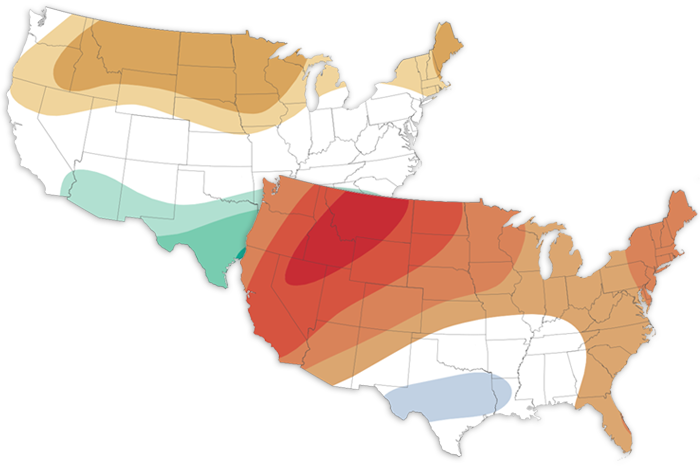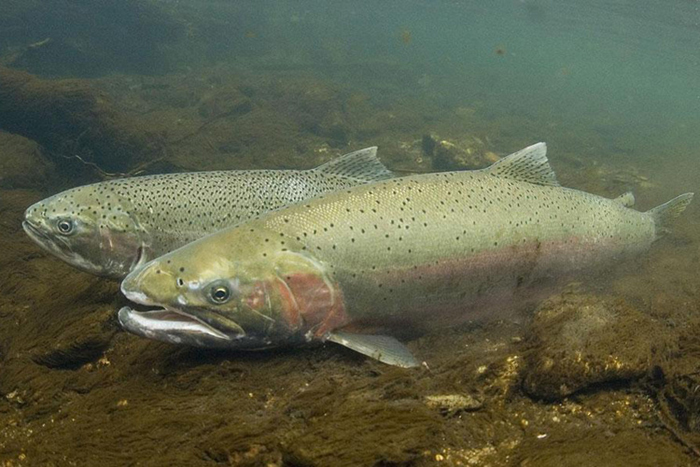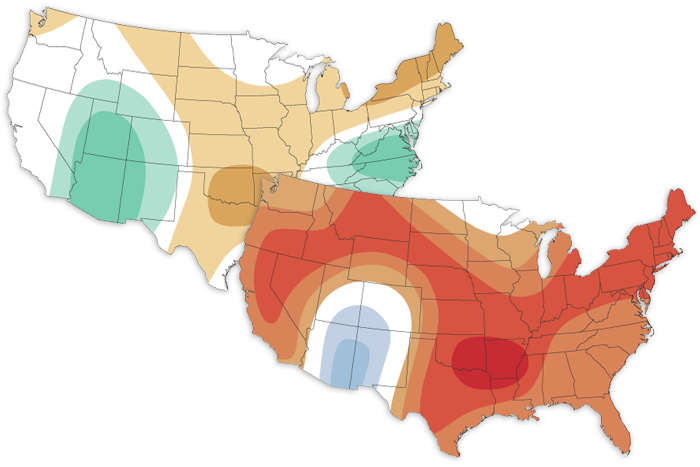It's all but a done deal: odds of La Niña this winter are higher than 90 percent. Plus a reminder list of why we care so much about La Niña.

The September 2022 climate outlook favors a warmer-than-average month for most of the contiguous United States along with a dry/wet split between the northern and southern tiers of the U.S.
Global surface temperature was among the 6 warmest years on record, despite a "double-dip" La Niña event that chilled the Pacific much of the year.
Earth had its sixth-warmest July on record, with extreme dryness over Europe, the U.S. West, western Australia, and central South America, and extreme wetness over eastern Australia, east-central Africa, and parts of the Middle East.
The tropical Pacific appears to be hopelessly devoted to La Niña for at least the early part of winter.
On average, July is the United States hottest month of the year. But where did this July fall in the historical record? See highlights from the monthly U.S. summary from NOAA National Centers for Environmental Information.

From the coasts of South America to the Galapagos Islands, the story of ENSO cannot be told without discussing its impact on marine life. But just as ENSO can affect climate patterns thousands of miles away from the equatorial Pacific, ENSO can also affect marine life. And there is no better example of this than its impacts on Salmon across the North Pacific. In this interview with expert Dr. Nate Mantua, learn all about the complexities of salmon and ENSO.

The August 2022 climate outlook favors a hotter-than-average month for much of the contiguous United States outside of the Southwest where the monsoon is expected to bring wetter and cooler-than-average conditions
It's no joke: forecasts are still favoring a La Niña three-peat this winter.
Through June, the U.S. area burned by wildfires in 2022 was more than double the long-term average.